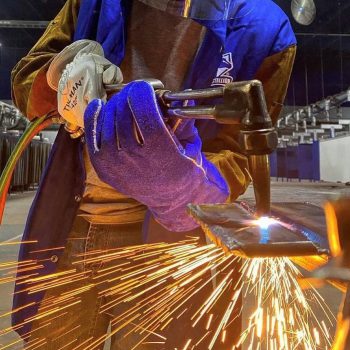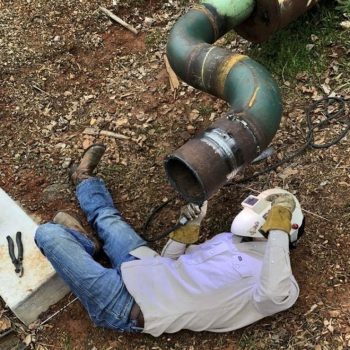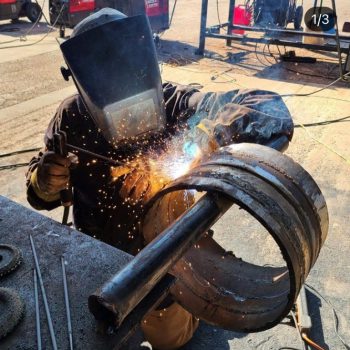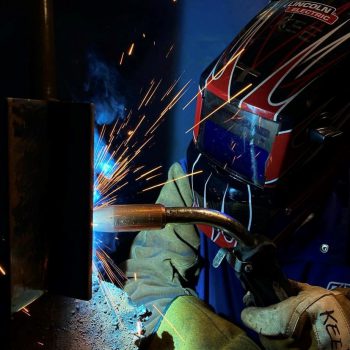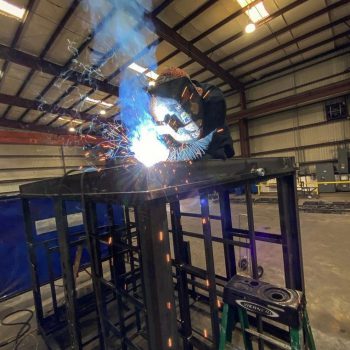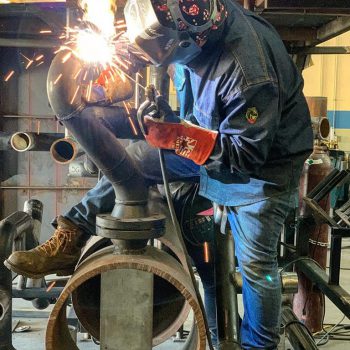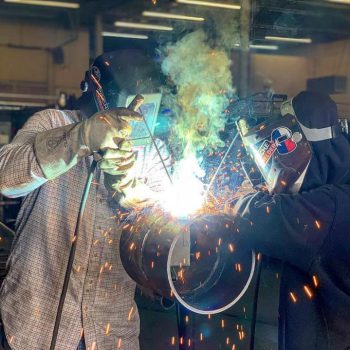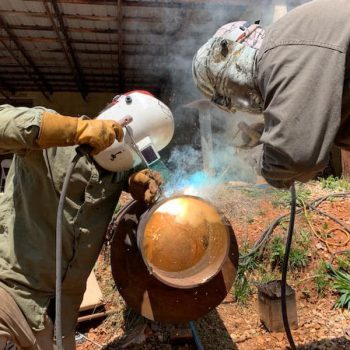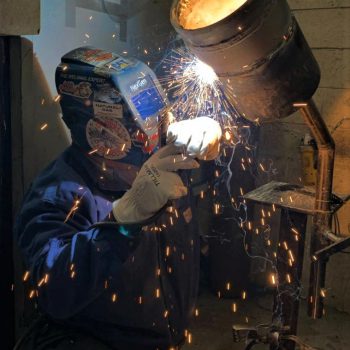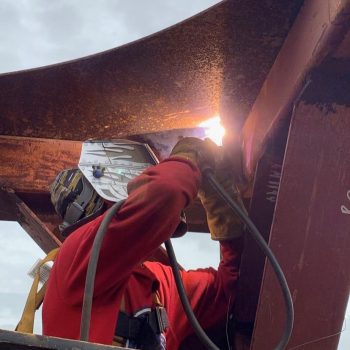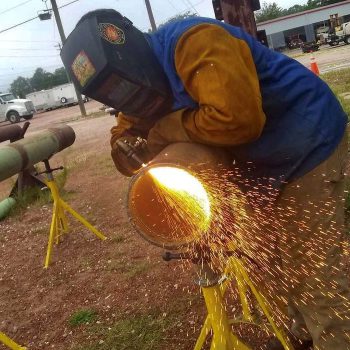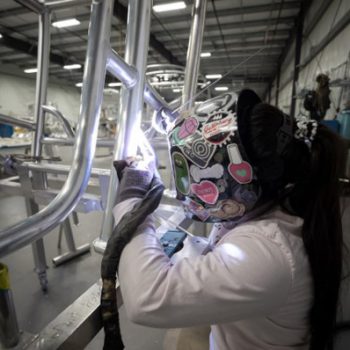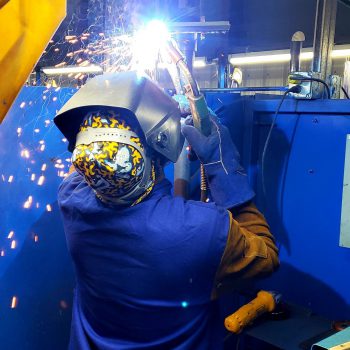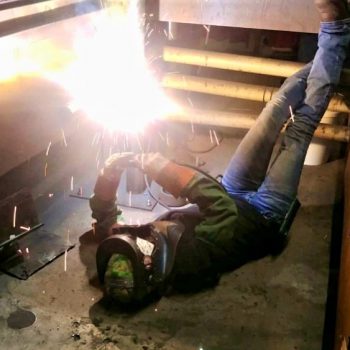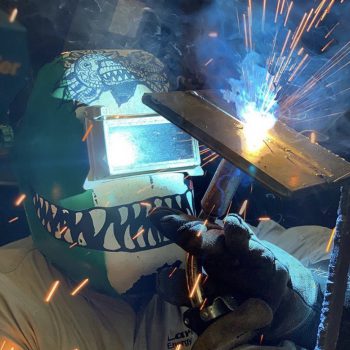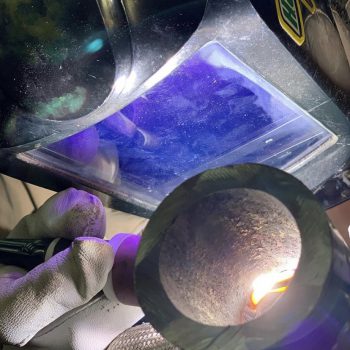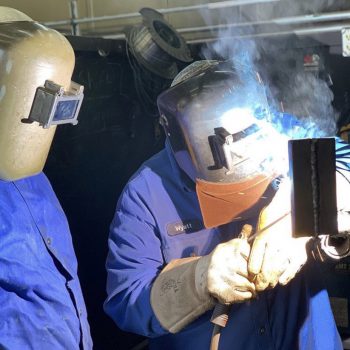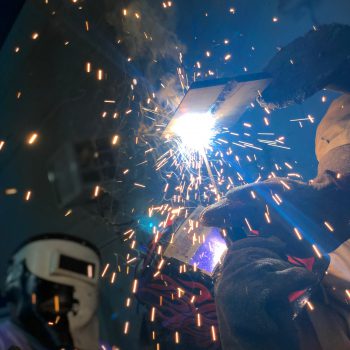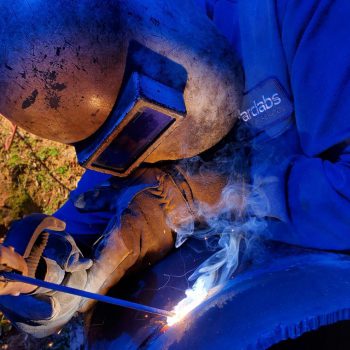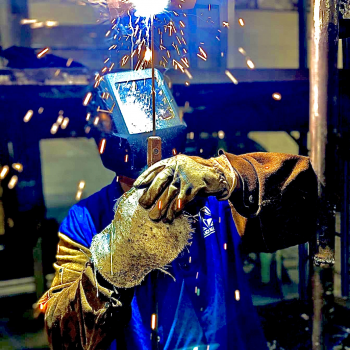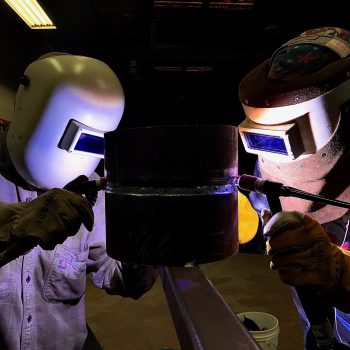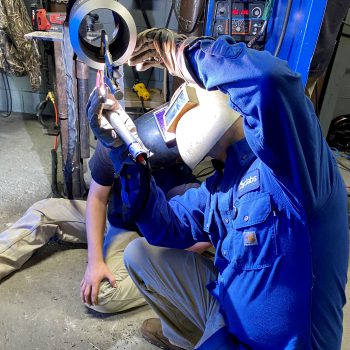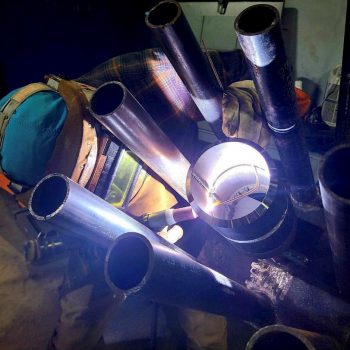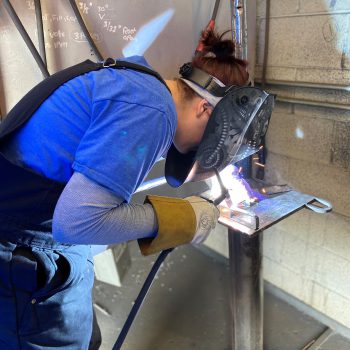How do I keep my polarities straight?
We hate to bring politics into the welding booth, but we’ll make this exception: remember SENators and REPresenatives when trying to hook up your welding leads to the correct polarity.
Polarity refers to the direction that current flows in a welding circuit (AWS has a nice tutorial). Polarity will be straight, reverse or AC. Here’s how politics come into it:
- SENator = Straight Polarity Electrode N You’ll see straight polarity abbreviated as DCEN (DC-) in a Welding Procedure Specification (WPS) or an electrode data sheet.
- REPresenative = Reverse Polarity Electrode P You’ll see reverse polarity abbreviated as DCEP (DC+) in a WPS or an electrode data sheet.
Use straight polarity for TIG welding steel and Flux Cored welding. Connect the torch/gun to the negative terminal of the welder and the ground clamp to the positive terminal. DCEN, where the current flows from the electrode to the workpiece, generates the majority of the arc heat near the base plate, which helps keep the heat off the delicate tungsten.
Use reverse polarity for most Stick electrodes and for MIG welding. Connect the electrode to the positive terminal and the ground clamp to the negative terminal. DCEP, where the current flows from the workpiece to the electrode, generates the majority of the arc heat near the electrode, which helps melt larger cross section of a solid electrode.
AC, or Alternating Current is where the current flow alternates between electrode negative and electrode positive. Use AC current for TIG welding aluminum (see our AC TIG blog post), some Stick electrodes and for Submerged Arc Welding (SAW). Because of how some TIG machines adjust the AC waveform, use the same straight polarity set-up as you would for DC TIG and connect the torch to the negative terminal.
When you get into an Arclabs booth, make it habit to check your electrode and work lead connections. You never know what the student before you was working on. If you experience an erratic arc and you know your weld parameter settings are good, one of the common culprits is an incorrect polarity setting.
For more welding knowledge
[wpu_silo links=’35’]
 877-647-4111
877-647-4111
